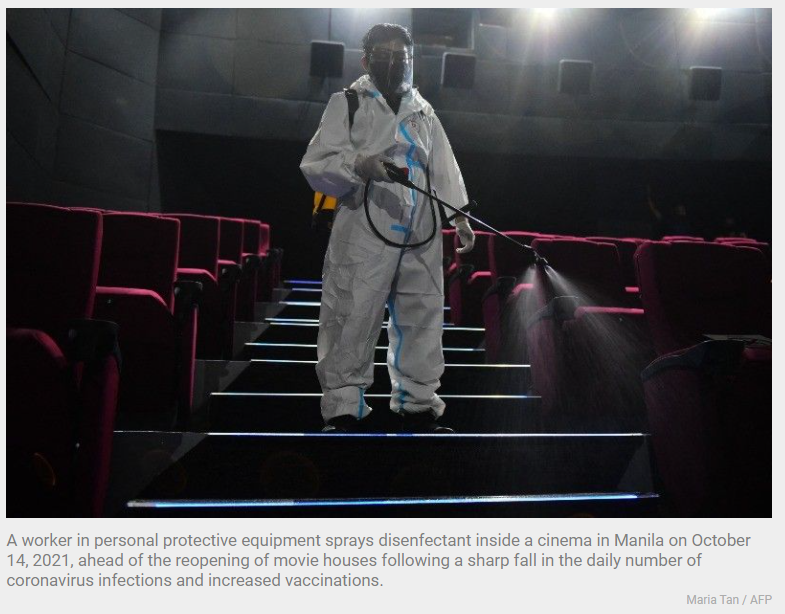Philippines: Economy avoids return to recession in Q3 despite new lockdowns
MANILA, Philippines (Update 1, 12:12 p.m.) — Renewed lockdowns meant to arrest a surge fueled by the Delta variant tempered growth in the third quarter, although the economy avoided a contraction after the government changed tack and imposed less damaging restrictions.
Gross domestic product, or the sum of all goods and services created in an economy, grew 7.1% year-on-year in the July-September period, easing from revised 12% growth recorded in the preceding quarter, the Philippine Statistics Authority reported Tuesday.
The latest reading beat analysts’ expectations. A Bloomberg survey had yielded a median growth estimate of 1.4% while a separate BusinessWorld poll had forecast growth would settle at 4.7% last quarter. But economists have been quick to point out that the third quarter GDP figure was still magnified by so-called “base effects”.
As it stands, the Philippines managed to prevent a return to recession despite tighter restrictions in August that once again crippled economic activity in Metro Manila, the center of business and commerce in the country. What made a big difference was the less strict curbs placed this year compared to 2020, when the economy sank to historic-low because lockdowns were at their tightest.
From the previous practice of sealing off an entire region, the government in September started implementing “granular” lockdowns with varying alert levels. The move was meant to minimize any economic losses from prolonged restrictions, which could cost the economy a total of P41.4 trillion over the next 40 years based on government estimate.
That change in strategy appeared to have worked. Seasonally-adjusted GDP, measured quarterly to help officials see the immediate impact of policies on the economy, grew 3.8% in the third quarter, reversing the revised 1.4% sequential contraction posted in the second quarter.
At a press conference, Socioeconomic Planning Secretary Karl Kendrick Chua said the capital region could transition to Alert Level 1 — the most relaxed level of restrictions — “by the end of the year or early 2022” if the country can better manage pandemic risks. Metro Manila is currently under the less strict Alert 2 in which senior citizens and children are allowed on public transportation and business establishments like shopping malls.
“Our progress in the third quarter shows that the recovery is accelerating and it is very likely that we will hit, or even exceed, the high-end of our growth target,” Chua said.
Indeed, data showed GDP growth averaged 4.9% in the first three quarters, close to the upper-end of the Duterte administration’s watered-down target of 4-5% for this year.
But the economy is still billions of peso away from where it was before the health crisis hit. At the same news conference, National Statistician Claire Dennis Mapa said the nine-month GDP was valued at P13.32 trillion, 5.7% lower than P14.1 trillion recorded in the same period in 2019. Chua said the economy could return to its pre-pandemic shape “as early as first quarter of 2022” if recovery sustains its momentum.
But Alex Holmes, Asia economist at Capital Economics, believes the economy “will still have a long way to go”. The good news is that the economy is set for another strong quarter, Holmes said, as cases decline while demand is expected to pick up during the Holiday season.
“The bad news is that the economy is still weak and starting from a very low base,” Holmes said in a commentary. “The economy will remain in catch-up mode throughout 2022.”
Nicholas Mapa, senior economist at ING Bank in Manila, agreed with Holmes. “Fourth quarter GDP may post a healthier expansion should Covid-19 cases remain on a downtrend, although developments in Europe may prove to be a cautionary tale for countries with low percentages of vaccinated populations,” Mapa said in an e-mail.
Source: https://www.philstar.com/business/2021/11/09/2139896/economy-avoids-return-recession-q3-despite-new-lockdowns


 English
English




